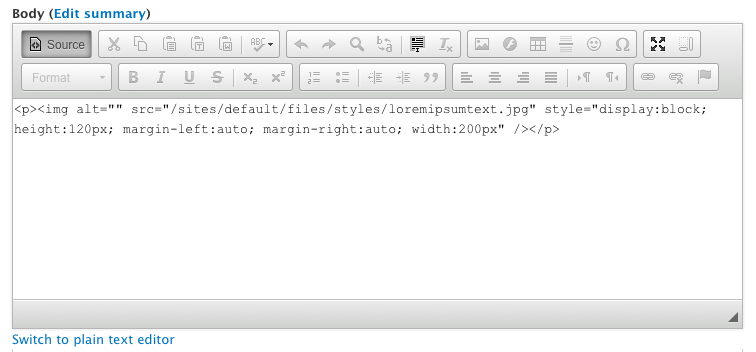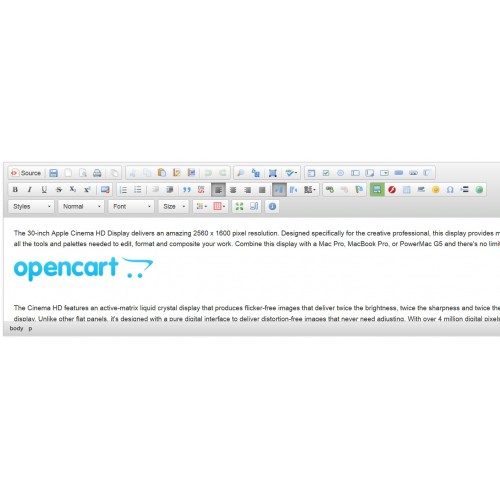

On the other hand, CKBox offers a more straightforward approach – you configure CKBox through an admin pane l that only authorized users can access. However, making changes to them requires you to have a bit of technical expertise. Options such as the structure of root directories, the types of files that you can upload, or the default image quality are all set in CKFinder’s config files. If you want to change the UI and settings of CKFinder, you have to modify its configuration files. # Configuring CKBox and CKFinderĬonfiguration is another area where CKBox and CKFinder are quite different. But note that CKBox also comes with image editor capabilities and improved accessibility through management of image alt tags. Integrating CKFinder or CKBox with CKEditor will give you advanced file management and image upload features.
#Ckeditor alternative license
However, note that CKFinder and CKBox are both Premium plugins, which means they require a CKEditor Commercial License to activate. Both are available as CKEditor plugins, and are built into all the predefined builds of CKEditor 5. Naturally, CKBox and CKFinder are both designed to integrate natively with CKEditor. # Integrating CKBox and CKFinder with CKEditor

Note that the self-hosted on-premises version of CKBox offers an independent application featuring the CKBox file management platform’s capabilities which you can set up on your servers or in your private cloud. On the backend, CKBox requires a REST token endpoint for user authentication and management. It also comes as a native React component that you can easily integrate into React apps. CKBox is compatible with major JavaScript frameworks like React, Angular, and Vue. # CKBox setupĪs for CKBox, you can add its frontend library to your app via a JavaScript library from the CDN or as an npm dependency. Alternatively, you can go for package managers like Composer, NuGet, or a Maven repository JAR for simpler updates.
#Ckeditor alternative manual
Keep in mind that manual updates are required for this method.
#Ckeditor alternative zip
# Setting up CKBox and CKFinder # CKFinder setupĬKFinder comes in several forms, including a zip package that you can unpack on your server. CKBox also provides a development token endpoint for an easy setup during testing or prototyping – just make sure not to use the development token in production environments. To incorporate CKBox within an app, you need to include CKBox’s JavaScript library in the HTML of a web page and then specify the URL of the token endpoint. This simplicity and adherence to widely adopted standards, such as JWT, makes the CKBox integration process much easier. The only requirement here is that you give CKBox access to a REST API token endpoint for user authentication and authorization using JWT tokens. This allows it to accommodate even less frequently used languages like Elixir. On the other hand, CKBox is a more flexible, backend-agnostic solution (meaning it’s indifferent to the backend technology used). This kind of customized integration comes with additional demands on the development and maintenance of connectors. This integration requires the connector to be created using the same language as the application’s backend.Ĭonsequently, CKFinder needs separate connectors for each backend stack it interacts with, including PHP, Java.

The server-side connector, engages with the host application’s backend to manage requests issued by the CKFinder frontend. # CKFinder key differentiatorsĬKFinder makes use of a unique combination of a server-side connector and a JavaScript frontend library. # Differences in the architecture of CKBox and CKFinderĬKBox and CKFinder each have their own unique architectural traits that influence the way in which they’re integrated into apps. Once you get a grasp on those differences, you’ll see why CKBox is the best CKFinder alternative. In this post, we’ll cover the specific architectural and technical differences between CKFinder and CKBox.

But the differences between the two go beyond just features. Put simply, CKFinder is our first-generation file manager, while CKBox is a more modern file management solution with a wide variety of features. So what’s the difference between them? While CKFinder and CKBox might look similar at first, they have several key differences that set them apart. You can easily integrate them into your web app to help you deal with digital assets, be it images or documents. If you’re looking for an advanced file management solution for CKEditor, CKBox and CKFinder are both great choices.


 0 kommentar(er)
0 kommentar(er)
